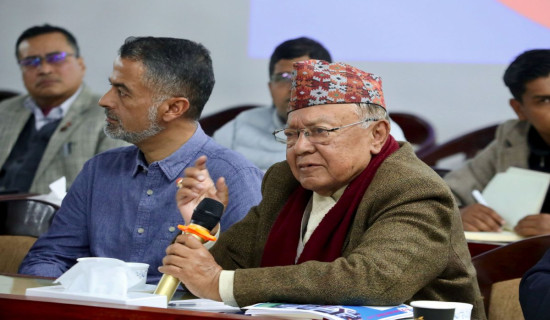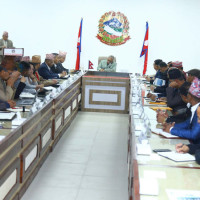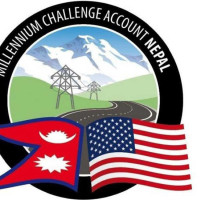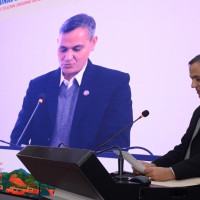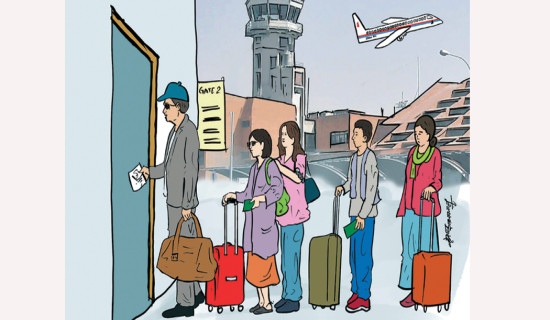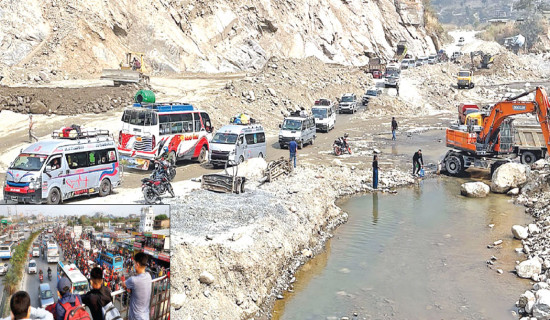- Tuesday, 23 December 2025
Monsoon may affect 2M people, over 14,000 personnel ready for disaster response
Kathmandu, June 24: Three security bodies – Nepal Police, Armed Police Force (APF) Nepal and Nepali Army – have said that they have completed their respective tasks of the action plan and preparation for monsoon preparedness and response for this year. Only last week, the government at a meeting of the executive committee of the National Disaster Risk Reduction and Management Authority (NDRRMA) chaired by Home Minister Bal Krishna Khand had endorsed the National Action Plan for Monsoon Preparedness and Response 2079.
The country is expecting above-normal rainfall this year. The government had projected that around 2 million people will be affected by the floods/landslides, and other monsoon-induced disasters this year.
Over 14,000 security forces on standby
Nepal Police Headquarters has stated that rescue materials, including manpower, are being prepared in all the seven provinces. A 25-member quick response team (QRT), including one senior police, will remain standby to get deployed in the event of disaster in all 77 districts, he said.
Senior Superintendent of Police and Spokesperson for Nepal Police Bishnu Kumar KC said that 1,930 trained swimmers have been deployed by the police. The Armed Police Force has mobilised 2,034 personnel by providing specialised disaster management training. The army has a standby force of 104 armies in each battalion of the 77 districts and 30 additional forces in each company. Similarly, the Army has its helicopters in Kathmandu, Itahari, Chitwan, Pokhara and Surkhet air-bases for conducting anytime rescue and relief operations, according to Nepali Army Spokesperson and Brigadier General Narayan Silwal.
2M people to be affected
Anil Pokhrel, executive director for the NDRRMA, who is also the member secretary of the committee, said that the NDRRMA has estimated that nearly 2 million people might get affected by the monsoon-induced disaster this year. That figure was 1.7 million earlier, but increased after detailed study reports came from most of the districts, Pokhrel said.
It is estimated that 421,000 households will be affected by the floods and landslides. This year, the monsoon had begun on June 5, one week earlier than the normal time. According to the Weather Forecast Division, monsoon winds are spreading across the country but it has not yet covered the whole of Nepal.
Highest risk in Province 1
The Department of Hydrology and Meteorology has forecast above-average rainfall this year. The action plan estimates that most of the population will be affected by the floods and landslides in Province 1. It is estimated that 120,000 families and 470,000 people will be affected there. After that, 97,000 families and 465,000 people in Madhes Province will be affected by the floods and landslides. Estimated 11,000 families and 55,000 people will be affected in Karnali Province, the lowest graph of the affected list among all provinces.
Similarly, 30911 families/households with a population of 146,828 might get affected by the monsoon in Bagmati Province.
The DHM has projected above-average rainfall in the monsoon this year in the northern part of Province 1, most parts of Madhes and all other areas except the southern part of Bagmati Province. During the four-month monsoon period alone (June-September), Nepal receives an average of 1,500 millimetre of rain, which is 80.5 per cent of the annual rainfall.
Jhapa, Morang, Sunsari and Udayapur of Province 1 are at risk of floods while Sankhuwasabha, Bhojpur, Terhathum, Khotang, Okhaldhunga, Dhankuta, Solukhumbu, Taplejung, Panchthar and Ilam are at risk of high landslides. All eight districts of Madhes are at risk of floods. It covers Bara, Dhanusha, Mahottari, Parsa, Rautahat, Saptari, Sarlahi and Siraha districts, according to Dr. Dijan Bhattarai, Under Secretary and Spokesperson for the NDRRMA.
Monsoon Response Command formed
The action plan 2079 has analysed the risk situation of this year’s monsoon disaster, the impact assessment, the responsibilities of the ministries and thematic areas as well as the roster details of the emergency operating fund and availability of the logistics have been included.
A monsoon response command team has been formed under the coordination of the Home Ministry’s Joint Secretary Pradip Koirala to effectively implement the action plan and coordinate and cooperate in the management of the monsoon disaster. The team includes representatives from the Ministry of Communications and Information Technology, National Disaster Risk Reduction and Management Authority, Nepali Army, Nepal Police, Armed Police Force, Department of Hydrology and Meteorology, Department of Roads, Department of Water Resource and Irrigation.



